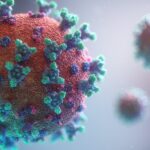Murders, kidnappings and conflict-related sexual violence have constituted parts of many Colombians’ reality due to internal conflicts since the mid-1900s. In 2016, a historic peace agreement was signed between the Colombian government and the FARC guerilla promising not only disarmament but also gender sensitive and inclusive peace measures. The expectations on the peace agreement were high, but what happened after the promises were made? Revisiting the peace agreement five years later, the questions at hand are: have the inclusive measures been successfully implemented or not, and why so?
Five years ago, in November 2016, the Colombian government and the communist guerilla group Fuerzas Armadas Revolucionarias de Colombia (FARC) signed a historic peace agreement ending an over 50 year long internal armed conflict. A conflict which involved murders, kidnappings, conflict-related sexual violence and forced displacement of over 8.2 million Colombians. The peace process preceding the final agreement received much international attention and the president at the time, Juan Manuel Santos, was even awarded with the Nobel Peace Prize for his peace work. Besides its greatness in ending such a long conflict, the peace agreement has been famous for another groundbreaking aspect.
Thanks to the strong Colombian women’s movement backed up by international support, the Colombian agreement is the first peace agreement to incorporate a transversal gender focus. This includes recognizing the differential impact of the conflict as well as constructing inclusive measures to ensure the needs of different people affected by the conflict, such as: women, LGBTQ+ persons, disabled people, elderly, children, indigenous groups, ethnical minorities, displaced people and small-scale farmers. Colombia is one of the world’s most unequal countries with extremely uneven development between urban and rural areas. This inequality has been raised as one reason why some poor people in the countryside chose to join the communist guerilla in the first place. Hence, the peace agreement included—besides disarmament, victims’ justice and reintegration of former FARC members back into society—also more structural changes. For instance several development programs were promised such as the Rural Reform designed to redistribute land to small-scale farmers. The peace agreement also put emphasis on encouraging diverse political participation and better protecting political leaders and activists, since they were often targets of violence and murder througout the conflict.
Relating to these different themes, about 120 gender-specific measures were agreed upon to ensure women’s needs as well as guaranteeing their equal access to the benefits of the peace measures. In practice, this meant for example recognizing and taking measures to stop women’s disproportionate exposure to conflict-related sexual violence, as well as their political and economic exclusion. These dangers are results of gender discrimination and patriarchal norms, which made women particularily vulnerable to the effects of the conflict. However, have these 120 measures been successfully implemented?
Grupo de Género en la Paz (GPAZ) is a team consisting of different women’s and human rights organizations, commissions, as well as juridical groups.They have monitored the implementation of the peace agreements’ gender-specific measures since the agreement came into force. According to GPAZ’s recent report, most measures to bring justice to victims of violence against women have either been satisfactorily implemented or partially so. This includes recognizing women’s suffering and ensuring gender equal participation in the establishment of a special tribunal to investigate crimes committed in the war.
Another area of success has been the implementation units where a Special Women’s Instance (Instancia Especial de Mujeres) was founded in order to monitor the implementation of the peace agreement’s gender approach. According to the UN verification mission in Colombia which monitors previous FARC members’ reintegration processes, the reintegration projects have also been successful. For instance almost 59 per cent of former female FARC fighters participate in the gender oriented reintegration programs. However, many previous female combatants struggle balancing reintegration with competing care-tasks, as well as getting equal access to protection measures as former male fighters. The unequal access to protection measures thus demonstrates continued gender discrimination, despite the equality assured in the peace agreement.
In fact, when looking at the bigger picture, only a fifth of the 120 gender-oriented measures have been satisfactorily implemented, with a seemingly slower implementation pace compared to the other peace measures. The statistics of violence against LGBTQ+ persons, human right defenders, as well as female-, indigenous- and ethnical minority leaders remain high. The GPAZ report concludes that many of the measures designed to protect political leaders and encourage women’s political participation have been poorly implemented. These issues were brought to the table at the UN’s Security Council Open Debate on Women, Peace and Security earlier in October this year when Colombian indigenous leader Celia Umenza Velasco said:
“In my territory of Cauca, three Indigenous women leaders whom I worked with were killed in 2020. Their brutal murders illustrate how women often pay a terrible price for their leadership.”
The violence in Colombia, witnessed by Velasco, is in fact increasing and massacres are reaching levels equal to those before the peace agreement came into force. Since 2016, at least 226 people have been killed and 118 soldiers have been under investigation for sexual abuses, demonstrating that while old cases of violence are recognized and sometimes brought to trial, new ones are constantly committed. The reparation program for sexual violence survivors, also still works poorly which means that there are inadequate services provided for those falling victims of this cruel crime.
The implementation of the structural changes promised in the peace agreement seems to be limited, which is further illustrated by the inadequate implementation of development programs and unequal access to the Rural Reform. Although women constitute 53 per cent of those who should be granted subsidies to buy land in one of the programs, they have only received an average of 1,7 hectare compared to the men’s 3,4 hectare. This demonstrates that equal access to the benefits of the peace measures is lacking in this area as well.
Colombian President Iván Duque Márquez. (Alexandros Michailidis/Shutterstock.com)
Then why has the implementation of the gender-specific peace measures not been more successful? GPAZ has noticed a clear deceleration course in terms of implementation from mid-2018 and onwards, correlating with current president Iván Duque Márquez’s term of office. Duque is known to oppose the current peace agreement and his presidential campaign centred around suggestions on how to change it. Duque’s opposition towards the peace agreement was built on his belief that the deal was too forgiving towards the FARC. Duque’s government has also demonstrated very low efforts regarding the LGBTQ+-specific measures, meaning that they do not take inclusiveness as seriously as emphasized in the peace agreement. Furthermore, Duque has been criticized for not dealing better with the murders of activists, to which his government often responds by blaming the country’s drug trafficking problem. As such, the current government can be seen as one contributing factor to the poor implementation of the peace agreement by dissociating itself from the negotiated measures.
Another explanation for the poor implementation of the gender-specific measures, especially with regards to the continued violence, can be found in the great nest of armed actors in Colombia. Community leader Luis Vasquez pointed this out in an interview with Vice, saying that: “Whenever there is a peace agreement, during the post-conflict the war can be worse. Why? Because it creates imbalances. Peace was only reached with one guerilla”. Besides FARC, there are in fact both paramilitary groups and other guerillas such as the ELN that are still active in Colombia and which are not included in the peace agreement. The existence of these other armed groups therefore partly explains the continued violence. There have also been reports about previous FARC members forming new armed groups as well as police brutality committed by the Colombian government itself. This became especially visible during the government protests earlier this year, where women protesters again were specifically targeted with regards to verbal and physical abuses of sexual violence.
Feminist demonstrators protest against women violence and president Iván Duque’s Government in 2019. (Sebastian Barros/Shutterstock.com)
Finally, like politics all around the globe, the implementation of measures in Colombia cannot be understood without considering the effects of the Covid-19 pandemic. In the Colombian case, the urgent health crisis meant that many action plans had to be postponed and that political participation became more difficult due to lockdowns, especially for people without internet access. Labour loss due to lockdowns also specifically affected traditionally women-dominated workplaces, which further revealed (and exacerbated) women’s economic precarity. Additionally, the restrictions on mobility made people stay more at home which increased the domestic violence against women and LGBTQ+ persons, thus further uncovering structural problems with patriarchal practices and gender-based violence. Finally, the armed groups expanded their control as they used the Covid-19 situation to impose their own mobility restrictions.
While the peace agreement reached between the Colombian government and the FARC guerilla was a big milestone in the complex internal conflict in Colombia, five years later there is still no absolute peace. Although it is obvious that peace cannot be established overnight, it is worrying to see that the implementation does not follow the inclusive path outlined in the agreement. Despite progress in some areas, women do not get equal access to the benefits of the agreement and are still targets of violence. Whether discussing lack of commitment by the current government, continued violence from armed actors or worsened vulnerabilities due to the pandemic, one common thread emerges when trying to understand the lack of established gender-oriented measures. This thread consists of patriarchal norms and practises which systematically treats men as superior to women, and these practices exist in varying degrees across the globe. As such, patriarchal norms and practises often legitimize the deprioritization of women’s needs, just like in the case of the Colombian government and the 2016 peace agreement. Structures of gender inequality continue to normalize exploitation of women’s bodies in conflict, like we have seen in the cases with armed Colombian groups. The depreciation of women also leads to women’s economic exclusion, which the unequal access to the Rural Reform has demonstrated. Furthermore, the covid-pandemic has also made it apparent that in times of crises, issues regarding gender and equality are set to the side. Therefore, to successfully accomplish a gender equal and inclusive peace, it is up to everyone to keep engaging in the global struggle for equality.

Vilma Ellemark
Vilma Ellemark is a political science student, co-host of the feminist show F-EMME on K103 Gothenburg Studentradio and writer for Utblick since spring 2021




